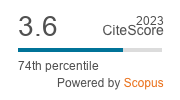Article | Open Access
Post-Growth Ambitions and Growth-Based Realities in Sustainable Land-Use Planning
| Views: | 2336 | | | Downloads: | 938 |
Abstract: Governments have developed, agreed, and often embraced ambitious targets to meet sustainability and climate change demands. The use of land is foundational for long-term success and one of the most crucial resources where absolute limits of development become tangible. In Europe, success in stopping the expansion of settlement uses through building on natural or agricultural land remains limited in scope and speed. While planning instruments could be open for versatile uses, a pro-growth pathway continues at all planning scales. The premise of this article is that growth fixation is inscribed in planning instruments. We build on post-growth planning literature to conceptualize the relevance of (post-)growth for land-use planning. Two examples of planning instruments (modelling regional land use needs, density concepts) and their application in German case studies illustrate wherein growth has been locked and within which potentials for change lie. We investigate inscribed premises of the causal relation between population and household growth to land consumption that are leading to a divergence between the need for land and the provision of land. By doing so, we position post-growth planning to understand contemporary challenges in reducing the net consumption of land, and as a crucial body of thought that better accounts for the tangible limits of available land.
Keywords: land-need-modelling; land consumption; land-use planning; planning instruments; post-growth planning; sustainable land-use
Published:
Issue:
Vol 9 (2024): Urban Shrinkage, Degrowth, and Sustainability: How Do They Connect in Urban Planning?
Online discussion: Watch the conversation about this article on Let's Talk About
© Christian Lamker, Thomas Terfrüchte. This is an open access article distributed under the terms of the Creative Commons Attribution 4.0 license (http://creativecommons.org/licenses/by/4.0), which permits any use, distribution, and reproduction of the work without further permission provided the original author(s) and source are credited.




